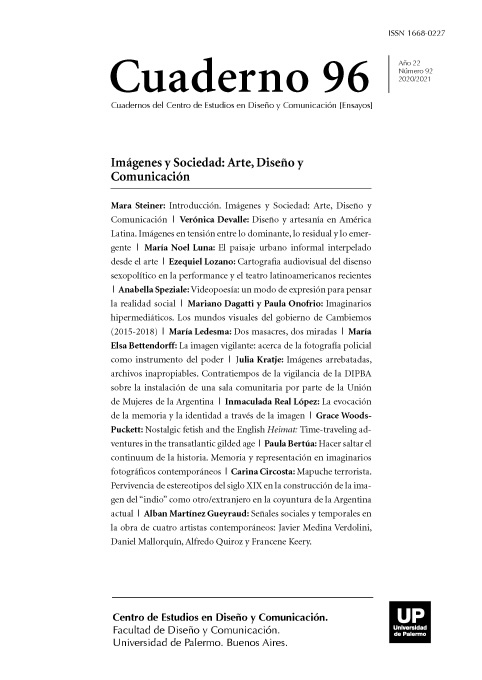El paisaje urbano informal interpelado desde el arte
Abstract
The current urban art not only intends to engage in a dialogue with society, it also proposes to transform the city. A model case on the use of art as an auditor of the urban landscape, which is presented in this writing, is the Favela-painting project, experience which has strengthened and expanded the powers of urban art, linking methods and expressions of the artistic field with urban improvement objectives. Motivated by social inequality, two Dutch artists decide to reinterpret the canvas, finding in the precarious facades of popular housing that possible means of expression. The analysis of this experience, from the urban planning approach, claims the informal space through art, because the improvements achieved on the urban landscape and the constructive quality of the popular housing are remarkable. Social conflict is addressed in an alternative way, empowering the population with art as a vehicle for appropriation, cooperation, training and self-management. This initiative has coincided with other actions on urban informality promoted by the state. Neighborhood improvement programs are overlap with the case in question, proposing in the mixture of these fields new forms of relationship between art and politics.
References
Becker, H. (2008). “Mundos de arte y actividad colectiva”, en Los mundos del arte, Buenos Aires, Universidad Nacional de Quilmes. Disponible en: https://drive.google.com/file/d/0Bw0mBdvFuWu4N3pXak4tT25FWGs/view?usp=sharing
Cappuccio, S. y Mignaqui, I. (2015). La política de urbanización de villas y asentamientos precarios en la Cuenca Matanza - Riachuelo: la consolidación de los territorios de la desigualdad. En XXIX Jornadas de Investigación y XI Encuentro Regional, SI+TER, FADU - UBA. Buenos Aires. ISBN 978 950 29 1577 7.
Gutierrez, A. (2004a). “La teoría de Bourdieu en la explicación y comprensión del fenómeno de la pobreza urbana”. En: Martín Criado, E. Alonso, L. y Moreno Pestaña, J. (Comp.). Pierre Bourdieu: las herramientas del sociólogo. (pp. 255-280). Madrid: Fundamentos.
Habermas, J. (1987). “Teoría de la acción comunicativa” T. I, Madrid: Ed. Taurus. Heidegger, M. (1927). Ser y Tiempo. SCM Press; SUNY Press; HarperCollins.
Hervás Y Heras, J. (2015). “La Bauhaus de Weimar. Ellos (y ellas) en pos de una meta común: la arquitectura”, Revista Europea en Investigación de Arquitectura, n°3. Disponible en: http://oa.upm.es/34242/1/JOSENIA_HERVAS_Y_HERAS_1.pdf
International Habitat Coalition (--) Agenda HABITAT I, 1976; HABITAT II, 1996; HABITAT III, 2016.
Lavedan, P. (1926). “¿Qu´est-ce que l´urbanisme?”. Introduction à l´histoire de l´urbanisme, Paris: Laurens.
Lefebvre, H. (1970). La Révolution urbaine, Paris: Gallimard [traducción castellano (1972): La Revolución Urbana, Madrid: Alianza Editorial.
Longoni, A. y Davis, F. (2009). “Las vanguardias, neovanguardias, posvanguardias: Cartografías de un debate”, en Katatay. Revista crítica de literatura latinoamericana, N° 7, septiembre de 2009. Disponible en: https://drive.google.com/file/d/0Bw0mBdvFuWu4Yk5LSEZNZmFfX0E/view?usp=sharing
Souza Pereira, L. A. (2010.) “O programa Favela-Barrio: Mais do mesmo? Quais as posibilidades para a superacao dos “problemas” existentes na cidade do rio de janeiro’”. En Scripta Nova, Universidad de Barcelona, ISSN: 1138-9788. Vol. XIV, núm. 331 (54), 1 de agosto de 2010
Los autores/as que publiquen en esta revista ceden los derechos de autor y de publicación a "Cuadernos del Centro de Estudios de Diseño y Comunicación", Aceptando el registro de su trabajo bajo una licencia de atribución de Creative Commons, que permite a terceros utilizar lo publicado siempre que de el crédito pertinente a los autores y a esta revista.


